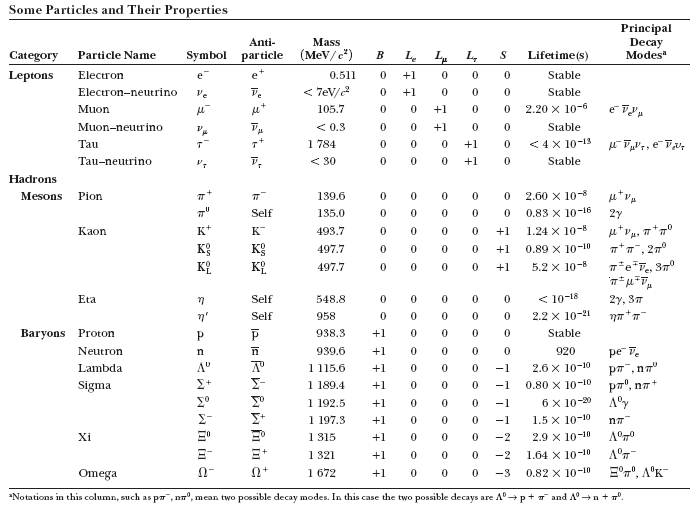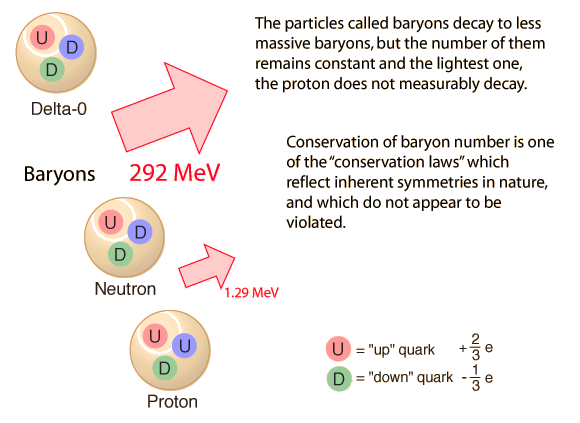Baryon number
The baryon number of particle physics, a quantum number of elementary particles, is defined as the difference between the number of quarks and the number of anti-quarks, divided by 3:
Thus it is:
- 1 For baryons such as the proton and the neutron ( each composed of three quarks )
- 1 / 3 for quarks
- 0 for leptons (such as the electron) and for mesons
- -1 / 3 for antiquarks and
- -1 For antibaryons ( each composed of three quarks ).
Baryon number as a conserved quantity
According to the standard model of elementary particle physics, the baryon number is an absolute conserved quantity, which is why the lightest baryon, the proton is stable.
In many beyond the Standard Model theories such as the Grand Unified Theory (GUT), however, the baryon number conservation is not an exact size so that protons decay with time, but with a very large half-life.
The mechanisms currently adopted the baryogenesis, the origin of the imbalance of matter and antimatter in the early Universe fractions of a second after the Big Bang, presuppose the non-conservation of baryon number.
In most versions of the GUT however, the difference of baryon and lepton number BL remains strictly obtain at least.









